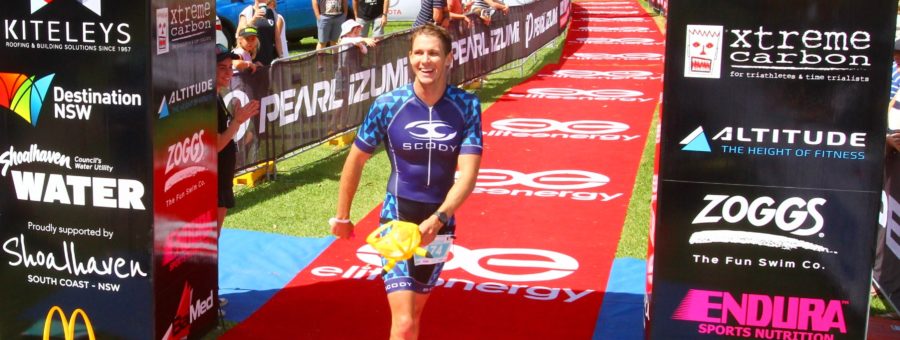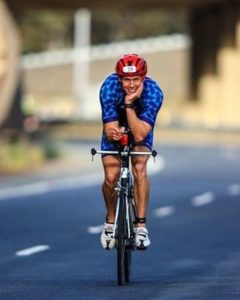
NEWS

A Few Things I Have Learned Along The Way – Michael Entwistle September 27th, 2017
We all lead different lives with different goals and different challenges. I write this from my own perspective and from my own experiences. As we are each individuals I truly believe we need to find what works for us as individuals.
Here are a few things I have learned along the way. The fun thing about this sport is I’m still learning.
Slowing down to speed up.
As a childhood swimmer I knew one way to train. Go hard or go home. The first years in triathlon I trained religiously by this motto, if I wasn’t sweating, panting and almost dead at the end of each workout then it was pointless. How wrong I was. I’d heard people talking about easy rides and easy runs but this just didn’t make sense to me. After 2 years of smashing myself and being injured every three months I tried to find what I was doing wrong.
Slow down to speed up. It just did not make sense, but after hours of reading 500 different ways of training on the internet I decided to give the well known MAF method a try. For those of you that don’t know what I am talking about, put simply it’s find your aerobic heart rate and don’t go above it. So I got through 3 months of running to heart rate and I was ready to give a running race a try. My HR through all training runs had me running between 5:00 and 5:30 pace depending on terrain, fatigue, heat – all those variables that exist in training influencing how we feel. So here I was lined up at my first half marathon having not run faster than a 5:00 minute kilometre wondering what pace do I have? How fast can I hold? I don’t know if I can go sub 5:00, it was time to go hard or go home. That day I ran a 4:06 pace half marathon, nothing outrageous nor amazing but it was a result I was shocked by and impressed with. How did this happen? I do not think there is anything tricky to it – limiting your efforts to aerobic leaves you less fatigued after each run, resulting in you running more frequently and more consistently. Slow down to speed up.
The use of technology in sport.
I have a day job in IT and a general interest in anything new, technical and most importantly shiny. I began training with a Timex timer watch, out for 30 minutes run back, I then progressed to pace/speed, on to heart rate and finally power for cycling and now running. I was a slave to the data, my data told me I would be fresh on day X and tired on day Y. I rode too hard through this period in the race and it cost me my run. I was riding smooth enough throughout the race making my variable index too large, resulting in me running poorly. I had moments on race days where batteries went flat and I would have no idea what to do. To run well, I need to ride X power but now I don’t know how hard I am riding, I am lost, my race is ruined. I had become dependent on technology to tell me how I was.
About 12 months ago I engaged a coach for an attempt at Ironman NZ (which didn’t pan out as I planned). I was told when we started that we could use data and all the tools to train with or we could go with his preferred method of training and racing to feel. I was paying him for his advice and his knowledge so we would do this his way. I see on my training plan 30 minute easy run, alright I’ve got this, 6km @ 5:00 pace for 30 minutes done. Later that week when I was talking with the coach, he asked what a few of my recent running race times had been and I told him. He then went on to say well I’ve an athlete who is about 10 minutes faster over a half marathon and he is running his easy runs around 5:20 pace. Did that run feel easy he asks? I think so, I reply.
| So the next run I go out and run at 5:30 pace, a pace I’d agreed with myself I’d try. I let my ego go as I see people I deem ‘unfit’ run by me and I just do my thing. I finish the run and feel like I haven’t really done anything. I give the coach a call and tell him what I did and that I feel fresh, is this okay? He replies perfect, easy is easy and hard is hard. So 6 months of training to feel where easy is easy not some half-baked telling myself I’m going easy sort of effort but actually easy. We get to Husky 2017 and I’ve come off some big days of training leading into NZ but I was there to race with what I had on the day. I swam comfortable to feel, I rode easy at times, harder than I liked at times, but knew exactly what I was doing, as I knew what felt right. I got off the bike and didn’t look at my watch once in the first 14km. It was here that I was checking times to see what I was looking at for finish times. I raced that day probably the best I’ve ever raced. |
|---|
| So the next run I go out and run at 5:30 pace, a pace I’d agreed with myself I’d try. I let my ego go as I see people I deem ‘unfit’ run by me and I just do my thing. I finish the run and feel like I haven’t really done anything. I give the coach a call and tell him what I did and that I feel fresh, is this okay? He replies perfect, easy is easy and hard is hard. So 6 months of training to feel where easy is easy not some half-baked telling myself I’m going easy sort of effort but actually easy. We get to Husky 2017 and I’ve come off some big days of training leading into NZ but I was there to race with what I had on the day. I swam comfortable to feel, I rode easy at times, harder than I liked at times, but knew exactly what I was doing, as I knew what felt right. I got off the bike and didn’t look at my watch once in the first 14km. It was here that I was checking times to see what I was looking at for finish times. I raced that day probably the best I’ve ever raced. |  |
I still recorded all my data during that period and during that race. The bike was a 3 lap course; not once did I look at my numbers during the race. I rode every lap that day within 1 minute of each other with my last lap being the fastest. I got off and ran the first 12km within 6 seconds of each other for each 1km split.
I believe technology has a place and is a valuable tool in aiding our performance, but don’t let it
dictate performance. Train with and without technology build trust in yourself and your knowledge of your body.
Sometimes you just need to understand easy is easy and hard is hard.
Michael Entwistle is one of our Elite Energy Ambassadors and a gun long distance triathlete




